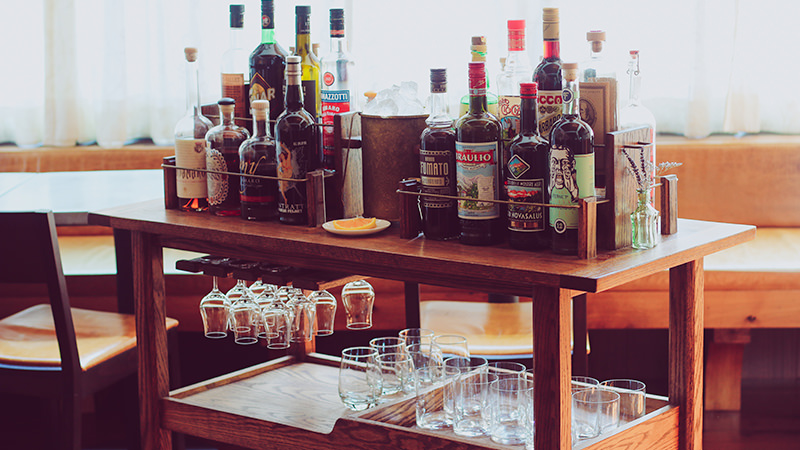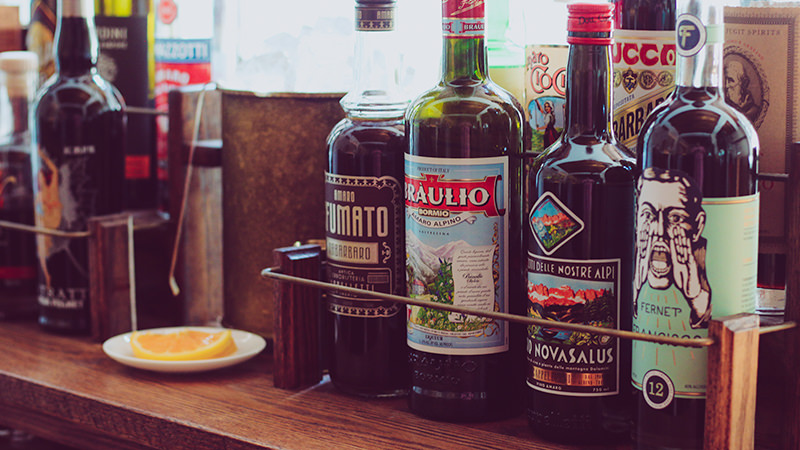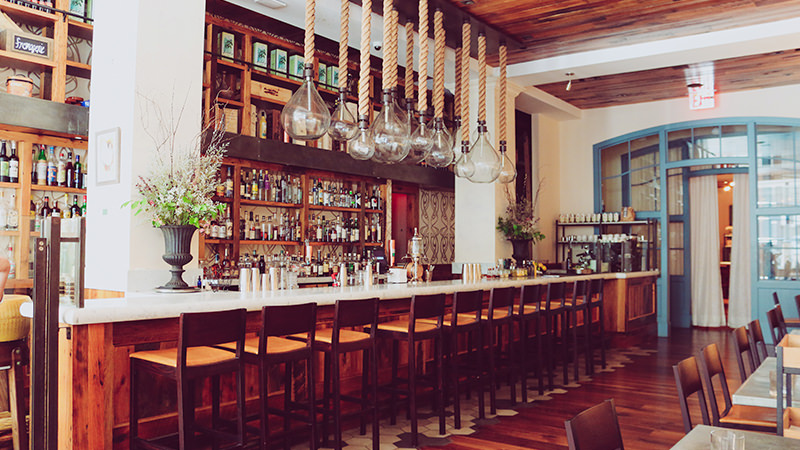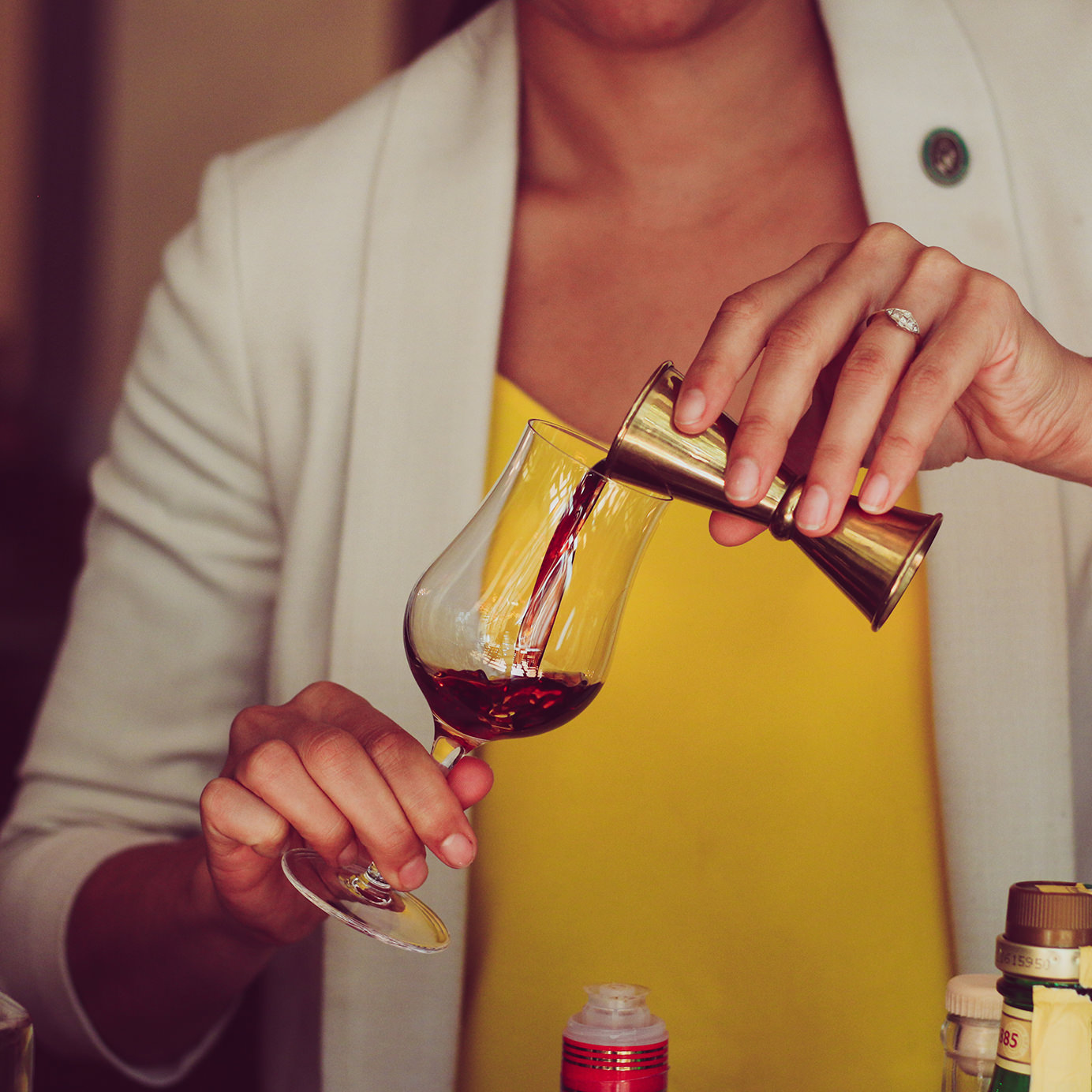
In the hospitality industry, amaro is cool. It’s the shot that a friend insists on sending to the chef after a particularly special birthday meal. When an industry person comes in to dine at a restaurant, what does the team send them as a parting gift? Mini bottles of Fernet Branca, of course. And at the dive bar after an exhausting Friday shift, a somm requests a round of shots. “Whiskey?” asks the bartender. The response: “Nah, gimme some Cynar!”
Over the last five to 15 years, the family of bitter Italian liqueurs called amaro (amari, in the plural form), has become a staple at any restaurant or bar that wants to be seen as beverage-focused. Where once only old-school Italian trattorie would have dusty bottles of amaro stashed away, now three-Michelin star restaurants like Blue Hill at Stone Barns and Per Se each have a handful of amari on their lists. And that’s nothing compared to some of the country’s most epic amaro collections. Chicago bar Billy Sunday boasts the largest collection in the U.S. with over 500 amari, while Canon Seattle offers pours ranging from $6 to $79. Even amaro-centric bars are popping up across the U.S., such as New York City’s Amor y Amargo, which focuses on all things bitter.
The question is: How did a beverage that for centuries has been considered by the Italians to be a necessary ending to a meal become not only an indicator of a great beverage program, but the hip new drink of choice for the beverage professionals themselves? And why now?
The long, bitter history
“This isn’t a new thing; this isn’t a fad,” says Erica O’Neal, wine director at Italienne in New York, who estimates that the restaurant’s beverage program offers 30 to 40 amari. While amaro may be trendy on the beverage scene, its history actually goes back centuries. Amaro’s origin is a humble one, and it was created more for utilitarian purposes than anything.
“The history of amaro is intrinsically tied to the history of medicine,” says Erik Lombardo, general manager at Marta in New York. “Human beings have been extracting the medicinal benefits of plants, barks, and roots for millennia.” Along the way, humans moved from chewing plants and barks to steeping them in tea or wine to gain their medicinal benefits. Eventually, the Italians began making tinctures from these beneficial plants, using the higher alcohol not necessarily because they wanted the spirit to be stronger, but because they wanted the medicine to be stronger.
“As the level of alcohol in the tincture rose, so did the benefits derived from the plants, as the beneficial compounds were more soluble in alcohol,” explains Lombardo. Amaro as we know it today is essentially a sweetened, diluted, friendlier version of these old tinctures.
While monks were amaro’s pioneers in the 15th century, it was also common for Italian families to make amaro at home to have on hand for various ailments. All they had to do was steep local herbs, flowers, roots, spices, fruits, or anything else on hand in grape brandy and the family had a cure-all liquid that was also traditionally sipped right after a meal to aid digestion. While commercial production of amaro began in the 1700s and 1800s, it was more common for restaurants in Italy to offer uber-local amari from family and neighbors. Many of the artisanal amaros that have gained popularity in the U.S. in recent years began as secret family recipes.

Pre-Prohibition, amaro was primarily available in U.S. areas with large Italian communities, such as San Francisco, New York, and Boston. These Italian immigrants brought their traditions and culture with them, so naturally, they brought amaro. Interestingly, it was the medicinal properties of amaro that allowed one brand to survive in the States throughout Prohibition. Fernet-Branca was allowed to be imported into the U.S. to be sold in pharmacies as cough medicine, particularly in San Francisco.
If the origin and early commercialization of amaro was largely based on medicine and tradition, in the middle of the 1900s, amaro began to be drunk for pleasure. The end of World War II saw many military members stationed in Europe bringing back international culture, and the aperitif tradition already present in Italy took root in the U.S. This created an opening for larger, more aperitif-style amaro brands like Campari.
“Campari was always the drink of choice at certain bars in Italy, and it was geared towards women more than anything,” says O’Neal. “It was kind of sugary, it had some color to it, you only needed a little bit … and it’s lower in alcohol.” Thus, after the 1950s, these larger amaro companies were staples in American drinking culture, and a few smaller brands were available in niche markets with Italian communities and restaurants.
But today amaro culture extends far beyond Campari and Fernet-Branca, and many of these smaller amaro producers have been popularized or newly brought into the U.S. in the last handful of years. Thank some of the people who are consuming amaro the most these days: the bartenders, who brought new life to amaro culture with the recent cocktail renaissance.
“Basically, cocktail bartenders who were getting more and more into obscure, pre-Prohibition era classic cocktails were trying to source the ingredients listed in any dusty old cocktail book they could get their hands on,” says Lombardo. And what were many of these ingredients? Amaro, and not just the widely available ones. These cocktail bartenders, such as the team behind Milk + Honey, set out to hunt down more amaro brands, some of which needed to be newly imported from Italy, and some of which had been hiding nearby all along.
“The funny part is, a lot of these amari were always available in old-school red sauce joints; they just sat neglected on the back bar unless some OG neighborhood paisan came in looking to settle his stomach,” notes Lombardo. Once these new amari became more prevalent in cocktail bars, other beverage professionals had more opportunities to taste them, driving curiosity.
“[The beverage industry] is kind of a small industry, so if someone’s really into something … it will very quickly spread,” says O’Neal. Italian-focused beverage programs, most of which already offered an amaro or two to assert authenticity, could add many of the now-available amaro selections to build out a full list, and even non-Italian spots began to offer at least a few amari. Flash-forward several years to today, when it’s almost more shocking to see a quality beverage program without amaro than with, often with several options.

Insiders’ appeal
But amaro is not merely a staple for sommeliers and bartenders in a professional context; it is personal as well, with beverage professionals often turning to amaro as their shift drink of choice. Why is this blatantly bitter beverage a go-to comfort drink?
“When Fernet hit its recent zenith in popularity it became known as a ‘Bartender’s Handshake,’ a … way of announcing to the bar that you were industry without humble-bragging about where you worked,” says Lombardo. Part of the amaro factor is the “cred” that it brings — only insiders know about and can handle this beverage.
But the appeal of amaro is intellectual as well. For beverage professionals, amaro is a fascinating subject to explore, so with a wealth of new expressions available to taste, curiosity is peaked. Just as somms like to get nerdy about the crus of Barolo or the vintages of Champagne, so too do they enjoy exploring not only the amari themselves, but what goes into them.
“I happen to think that amaro is one of the best expressions of terroir to be found on the spirit side,” says Lombardo. “Amari are traditionally made with herbs and aromatics from the region in which they’re produced.” Therefore, while there are no appellations for amaro, each one is an expression of its place by way of the botanicals that make it. O’Neal expands further, noting that amari from the north tend to be made in a drier, more alpine style, with harder edges and more herbs and barks. The south of Italy has more citrus and olive groves, so the amari there tend to have more fruit flavors and can be sweeter, making them easier-drinking. History, too, sings through in amari; examples from Friuli often have more cinnamon and nutmeg flavors, due to Trieste’s history as a trade port.

Beverage professionals’ love of casually sipping amaro provokes a taste question: Do these sommeliers and bartenders actually prefer more bitter beverages? The answer isn’t quite that simple.
“I think the industry in general gravitates to amaro because of its intense flavors and depth of flavors,” says Stephanie Andrews, bar director at Billy Sunday in Chicago.
“We’re more open to trying things,” says O’Neal. “At the same time, we work a lot on training our palate to recognize different flavors, aromatics, and body.” So in the same way that somms might gravitate towards funky natural wine or sour gose beer, it’s not always that beverage professionals prefer more bitter drinks but that they find stimulation in exploring their layers of flavor and are more open to flavors that might be off-putting to the casual taster.
To that point, there is something about amaro that is inherently pleasing to beverage professionals, and it likely comes from the liqueur’s bitterness itself. Just like acidity is the key to the refreshing quality of a wine, bitterness is the key to the refreshing quality of an amaro. And after a long day of tasting many different beverages, the most appealing thing to a sommelier is a drink that refreshes.
“It’s kind of a palate cleanser, and at the end of a meal or at the end of a shift, amaro is probably the most satisfying thing to have,” O’Neal says. “Reset your palate and go.”
Is this the peak of the beverage industry’s love affair with amaro before they move on to the next trendy shift drink? Has the U.S. reached full amaro saturation? It’s safe to say that there is plenty ahead for the amaro industry. Experiments with aged amaro and home-grown American amaro have begun popping up over the last several years, so it’s only a matter of time before there are even more amaro frontiers to explore. For one of the bitterest boozy beverages out there, that fact is definitely sweet.
